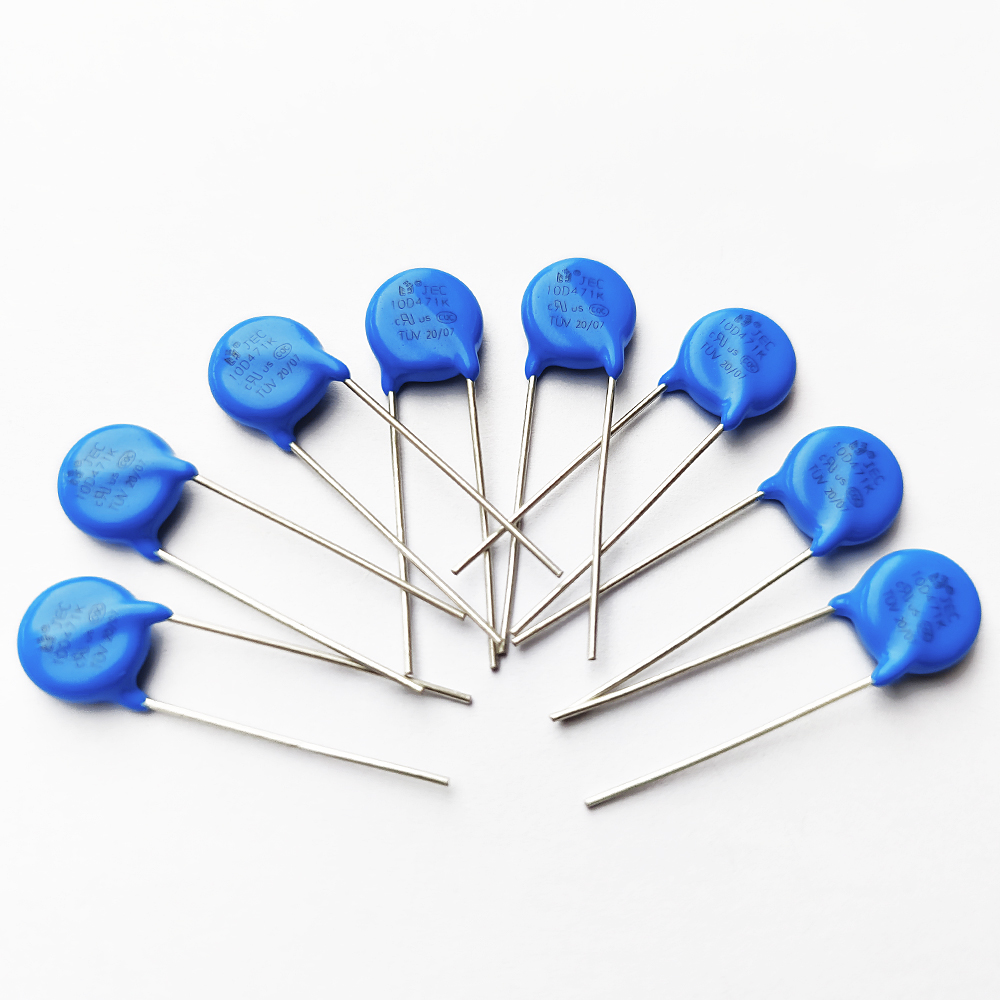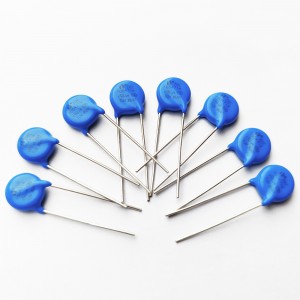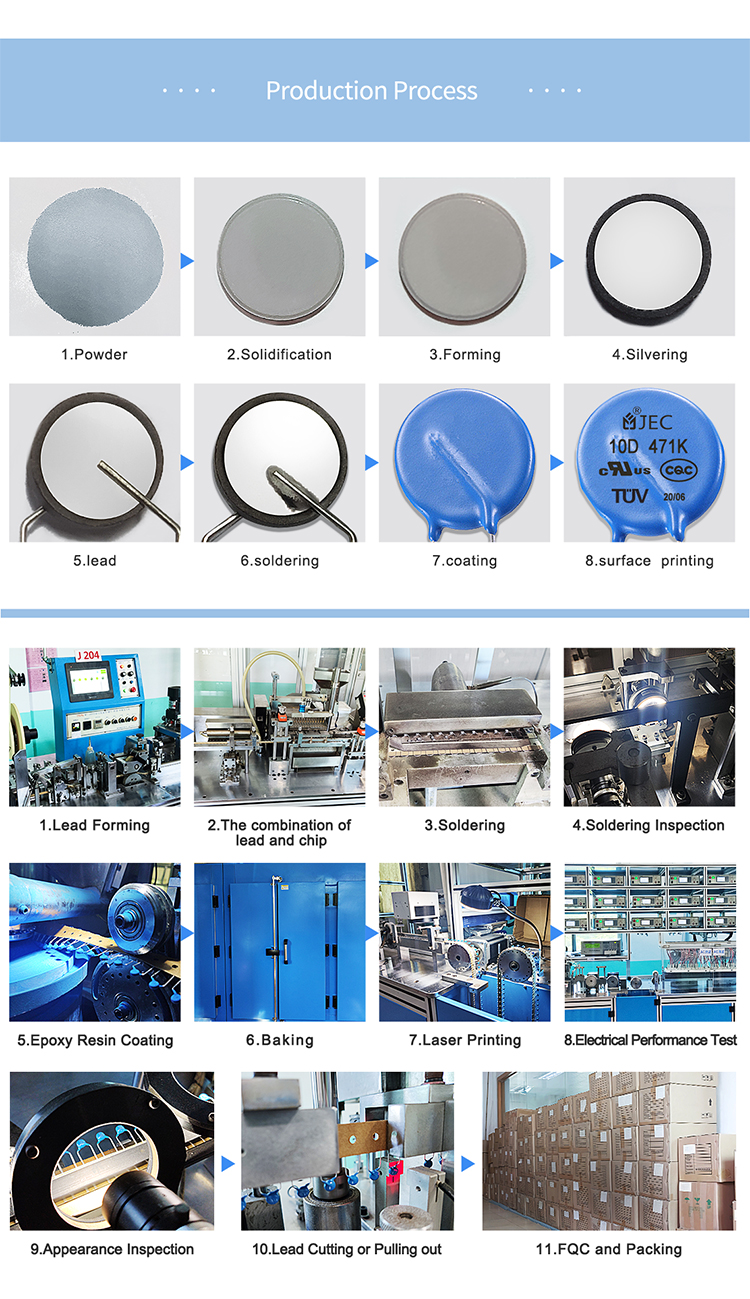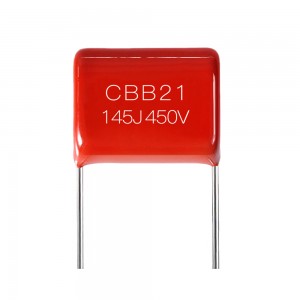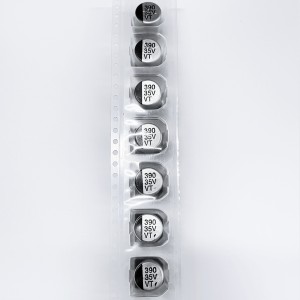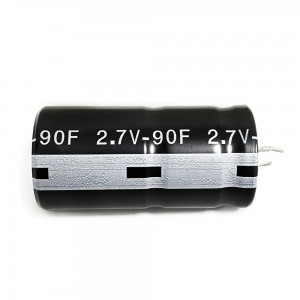Disk Varistor Electronics ESD Protection
Features and Technical Characteristics
Small size, large flow capacity and large energy tolerance
Epoxy insulation encapsulation
Response time: <25ns
Working temperature range: -40℃~+85℃
Insulation resistance: ≥500MΩ
Varistor voltage temperature coefficient: -0.5%/℃
Chip diameters: 5, 7, 10, 14, 20, 25, 32, 40mm
The allowable deviation of the varistor voltage is: K±10%
Application
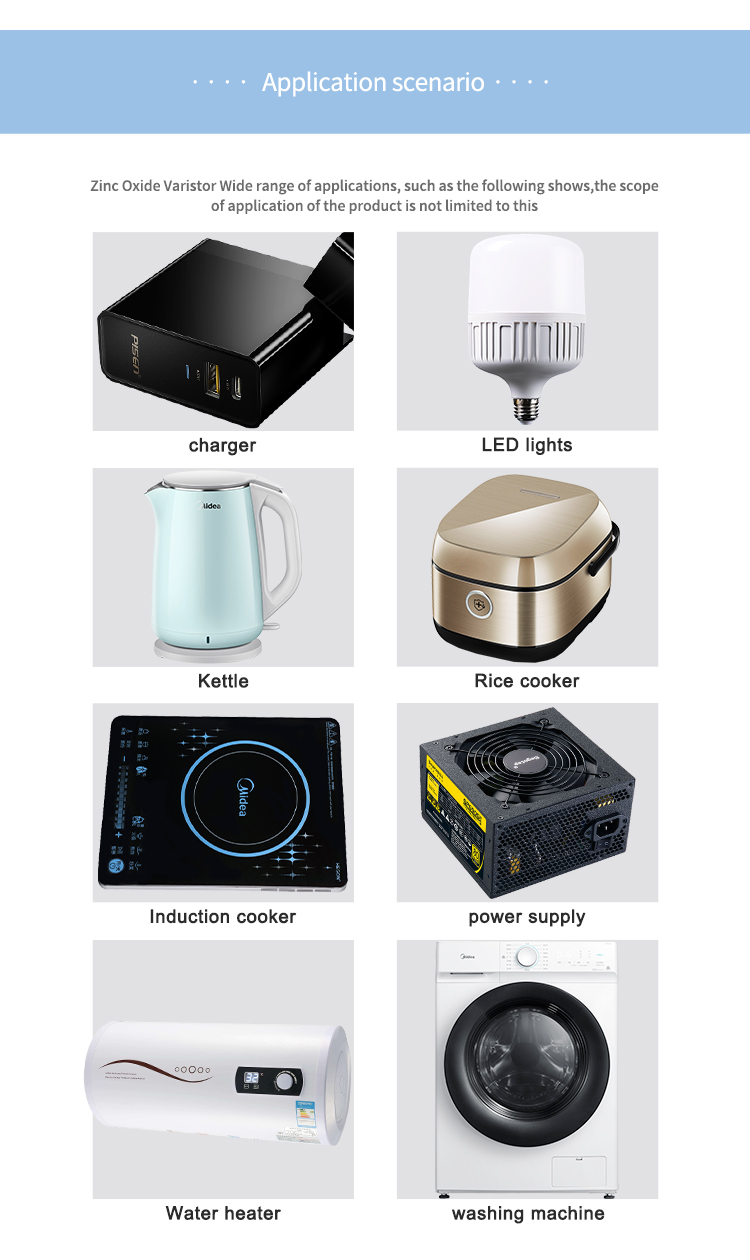
Overvoltage protection of transistors, diodes, ICs, thyristors and semiconductor switching elements and various electronic equipment
Surge absorption for household appliances, industrial appliances, relays and electronic valves
Electrostatic discharge and noise signal cancellation
Leakage protection, switch overvoltage protection
Telephones, program-controlled switches and other communication equipment and overvoltage protection
Production Process
Certification
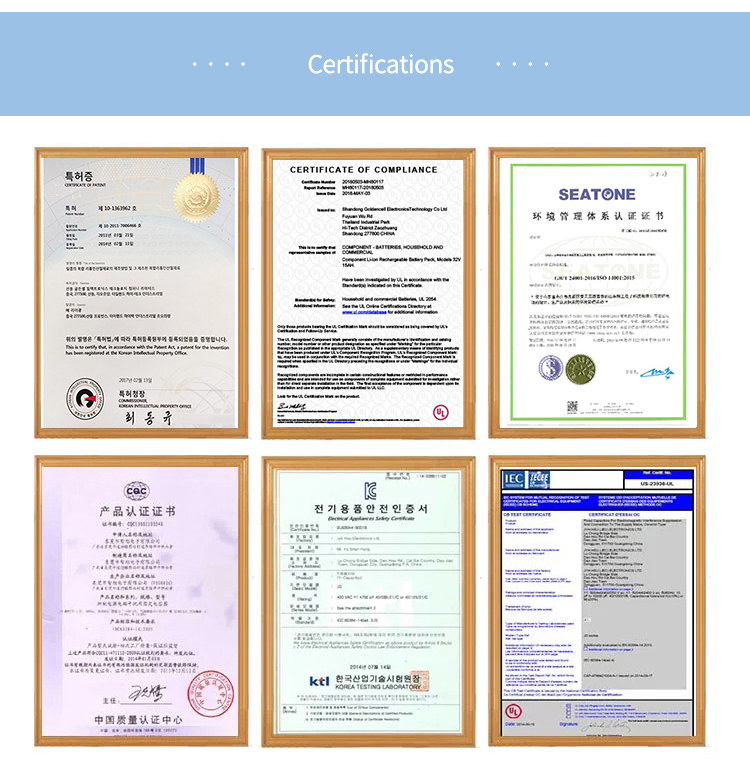
FAQ
What are the basic properties of varistors?
(1) Protection characteristics, when the impact strength of the impact source (or the impact current Isp=Usp/Zs) does not exceed the specified value, the limiting voltage of the varistor is not allowed to exceed the impact withstand voltage (Urp) that the protected object can withstand.
(2) Impact resistance characteristics, that is, the varistor itself should be able to withstand the specified impact current, impact energy, and the average power when multiple impacts occur one after another.
(3) There are two life characteristics, one is the continuous working voltage life, that is, the varistor should be able to work reliably for the specified time (hours) under the specified ambient temperature and system voltage conditions. The second is the impact life, that is, the number of times it can reliably withstand the specified impact.
(4) After the varistor is involved in the system, in addition to the protection function of the "safety valve", it will also bring some additional effects, which is the so-called "secondary effect", which should not reduce the normal working performance of the system.

